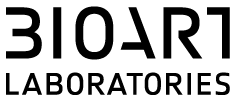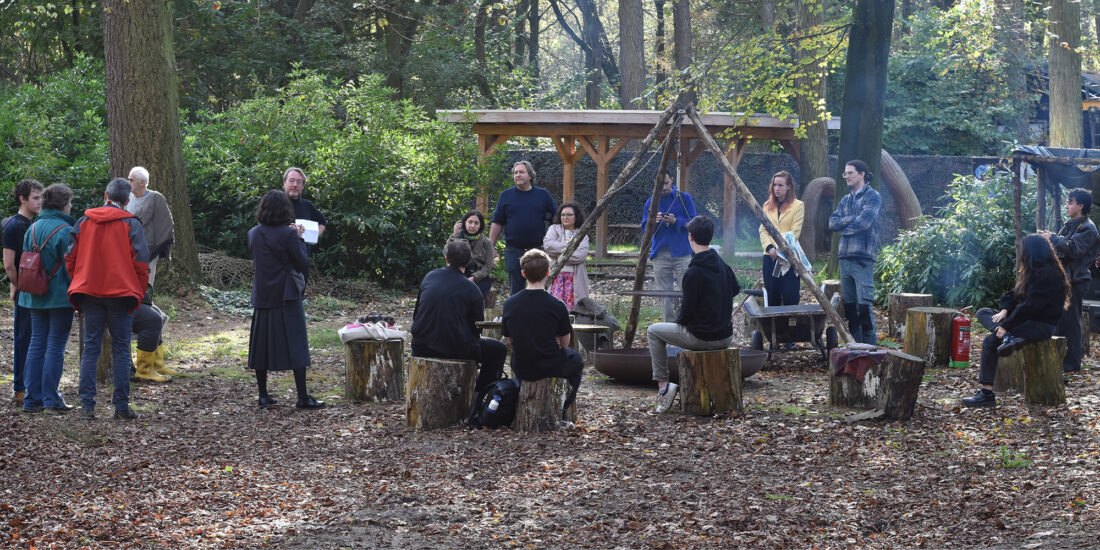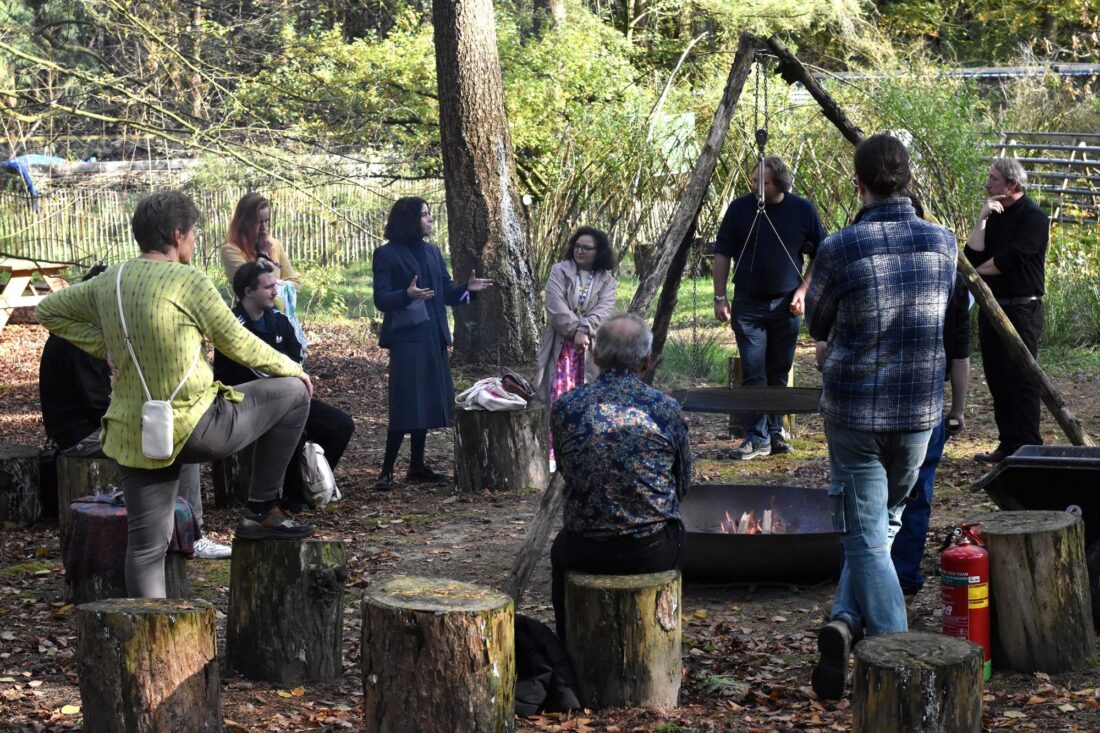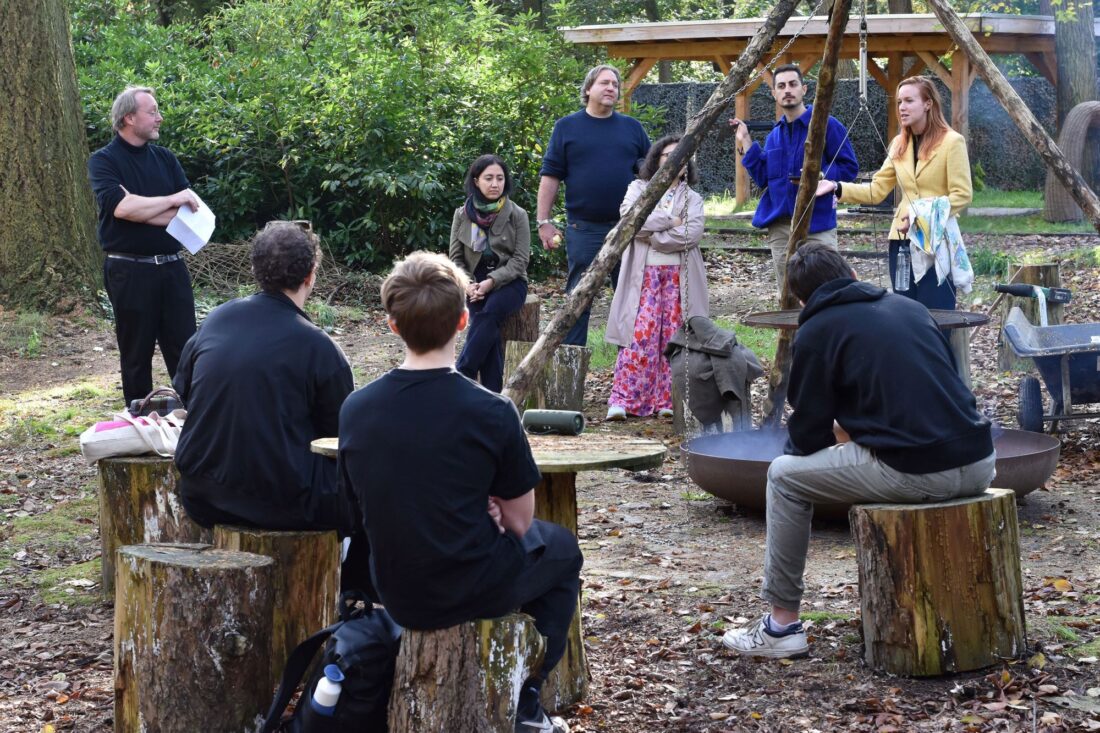A visit to BioArt Laboratories offers visitors an experience of inspiration and reflection toward a better world, as well as a chance to share stories, perspectives, and experiences. During the Dutch Design Week 2024, we hosted another of our debates around our firepit with philosopher Laurens Landeweerd. The bright sunshine and warm weather around the cozy firepit welcomed a large host of participants consisting of artists, scientists, and visitors alike.
Using the unique ecological and societal conditions of Brabant as a backdrop for a thought-provoking discussion, we kick off the debate with a specific point derived from the French philosopher Georges Canguilhem. As western medicine sees our organs as tools with specific functions, we can also view our tools as “externalized organs” that extend our capabilities—cars as legs, microscopes as eyes, clothing as extra skin, and writing as memory. Through these creations, we’ve shaped our environment to suit our needs, turning nature into a tool to sustain our way of life, similar to how animals like beavers construct their habitats. Rather than betting on Darwin’s lottery of spontaneous variation and selection, we adjust nature – even our own nature. However, this transformation has led to an increasingly confined and modified ecosystem that reflects human influence rather than the natural world’s original, boundless state. This constant expansion has often been mistaken for progress, yet mechanic expansion is not the same thing as progression as our adaptations haven’t made our habitat healthier or more resilient. We try to stifle our landscapes, but nature is per definition unpredictable. By fencing in natural landscapes, diverting rivers, and altering soils, we have disrupted ecosystems in ways that undermine biodiversity and long-term sustainability.
To ensure survival, we must explore ways of living that harmonize with nature rather than overpower it. This dialogue becomes especially urgent when considering water management, as we seek new approaches that respect both our ecological responsibilities and human needs. Four statements were presented to the participants, where they can side with agree/disagree by standing at the left or right side of the firepit.
Water management has become a contested area where technical solutions often overlook social and ecological impacts. Some argue that pesticides continue to circulate in streams unchecked, exacerbated by technology, as food production demands overshadow these issues. Others counter that advancements like water filtration help reduce pesticide runoff.
Art and design, intended to foster harmony between humans, nature, and water management, often become PR tools for large companies. Critics claim that corporations co-opt these initiatives without enacting real change, while others believe that authentic efforts by small companies can have a lasting impact by building deeper connections.
Strict conservation limits on eco-tourism, fishing, and agriculture may strain local economies, creating tension with water boards striving for ecological and economic balance. Supporters of limits argue that conservation allows resources to replenish and opens doors to sustainable economic opportunities, fostering resilience in local communities.
Climate change’s complexity makes it hard to communicate, often leaving the public confused. While some feel the topic is overwhelming, others argue that we’ve long been aware of climate change and that educational efforts have successfully clarified the issue, making it more understandable.
As the debate progresses, people switch to the left or right after hearing various arguments from each other, displaying the fluent nature of the dialogue and our willingness to adapt – and ultimately to coexist.





